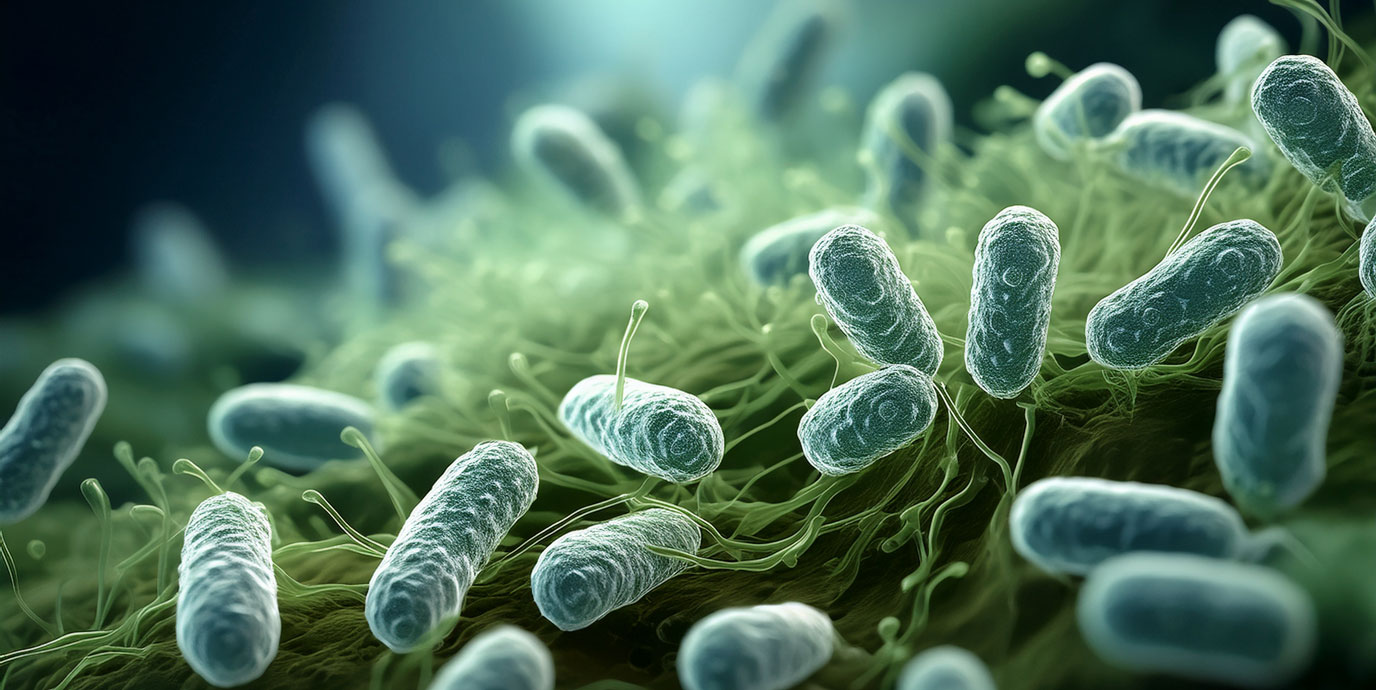
Under the right conditions, thiobacillus bacteria can solve hydrogen sulfide odor problems.
The Challenge of Hydrogen Sulfide (H2S)
Hydrogen sulfide is one of the most common and problematic odor-causing gases in wastewater and industrial facilities. It is toxic, corrosive, and generates community complaints even at trace levels. Traditional solutions such as chemical scrubbers or organic biofilter media often lead to high operating costs, maintenance issues, and limited long-term reliability.
The Biological Answer: Thiobacillus
Thiobacillus is a naturally occurring sulfur-oxidizing bacterium that thrives in GES Biotek’s Enhanced Cell-Max™ Plus engineered media systems. This microorganism uses H2S as an energy source and oxygen (O2) as an electron acceptor to power its growth. Thiobacillus (and related sulfur-oxidizing bacteria like Acidithiobacillus) can excrete sulfuric acid (H2SO4) as an end product. Whether they do so depends on oxygen availability, pH conditions, and the sulfur oxidation pathway active in the cell.
Pathways to H2S Oxidation
1. Partial Oxidation (Limited Oxygen)
- H2S → S0 (elemental sulfur)
- Elemental sulfur accumulates in the biofilm or on the media surface.
- No free sulfuric acid formed.
H2S + ½O2 → S0 + H2O
2. Complete Oxidation (excess oxygen, active SOX/APS pathway)
- H2S → S0 → SO32– (sulfite) → SO42– (sulfate)
- Sulfate combines with protons (H+) in water to form sulfuric acid.
H2S + 2O2 → SO42– + 2H+
3. Produce sulfate (SO42–) in water
- This release of H+ ions lowers local pH, making the environment acidic (often pH 2–4).
- The solution phase product is effectively sulfuric acid (H2SO4), lowering local pH.
- The process prevents competing bacteria from colonizing, giving Thiobacillus a stable niche.
Why This Matters
- Complete Odor Elimination: In biofilters and Bio-Scrubbers®, Thiobacillus does not “squirt out” sulfuric acid directly, but rather oxidizes sulfur all the way to sulfate. In water, this manifests as sulfuric acid. Thiobacillus converts H2S into harmless sulfur or sulfate, achieving 95–99% odor removal efficiency.
- Natural Acidification Advantage: The mild sulfuric acid generated creates a self-sustaining acidic environment (pH 2–4) where Thiobacillus thrives. This reduces competition from other microbes and ensures stable, long-term performance. This process is what makes Thiobacillus such an effective “odor scrubber” in biofilters and Bio-Scrubbers®.
- Corrosion Protection Through Control: Because acidification is predictable, GES media are designed to leverage Thiobacillus’ natural strength while preventing corrosion.
Why GES Biotek Media Is Superior
1. Engineered to Maximize Thiobacillus Performance
- Surface area of 49,000,000 m2/m3 (14,935,200 ft2/ft3) to support the Thiobacillus colony
- Rigid, inorganic substrate that does not degrade like wood chips or organic fillers
- Lightweight (85% lighter than rock) with high surface area for microbial colonization
- Nutrient-rich, engineered coating that accelerates biofilm establishment
- Resistant to compaction, clogging, and biological decay
- Long service life of 20 years before replacement is needed
2. Proven in the Field
- Successful upgrade with Enhanced Cell-Max™ Plus media, eliminating odor complaints
- Dozens of municipal installations nationwide and international
- Long-term reliability, low maintenance, and outstanding odor removal
3. The GES Value Proposition
- Lower life-cycle cost compared to chemical scrubbers
- No hazardous chemicals required
- Long-lasting engineered media provides reduced downtime and O&M savings
- Environmentally sustainable made from recycled glass
Thiobacillus does what chemicals cannot: it transforms hydrogen sulfide into harmless compounds naturally, safely, and cost-effectively. Thiobacillus uses this energy for autotrophic growth. It captures CO2 from the air (like plants do) and builds cellular material. The microbial community grows more robust over time, increasing the system’s ability to handle higher odor loads.
By harnessing the biology inside GES Biotek’s Enhanced Cell-Max™ Plus media, clients achieve predictable odor control, lower costs, and achieve peace of mind for decades.